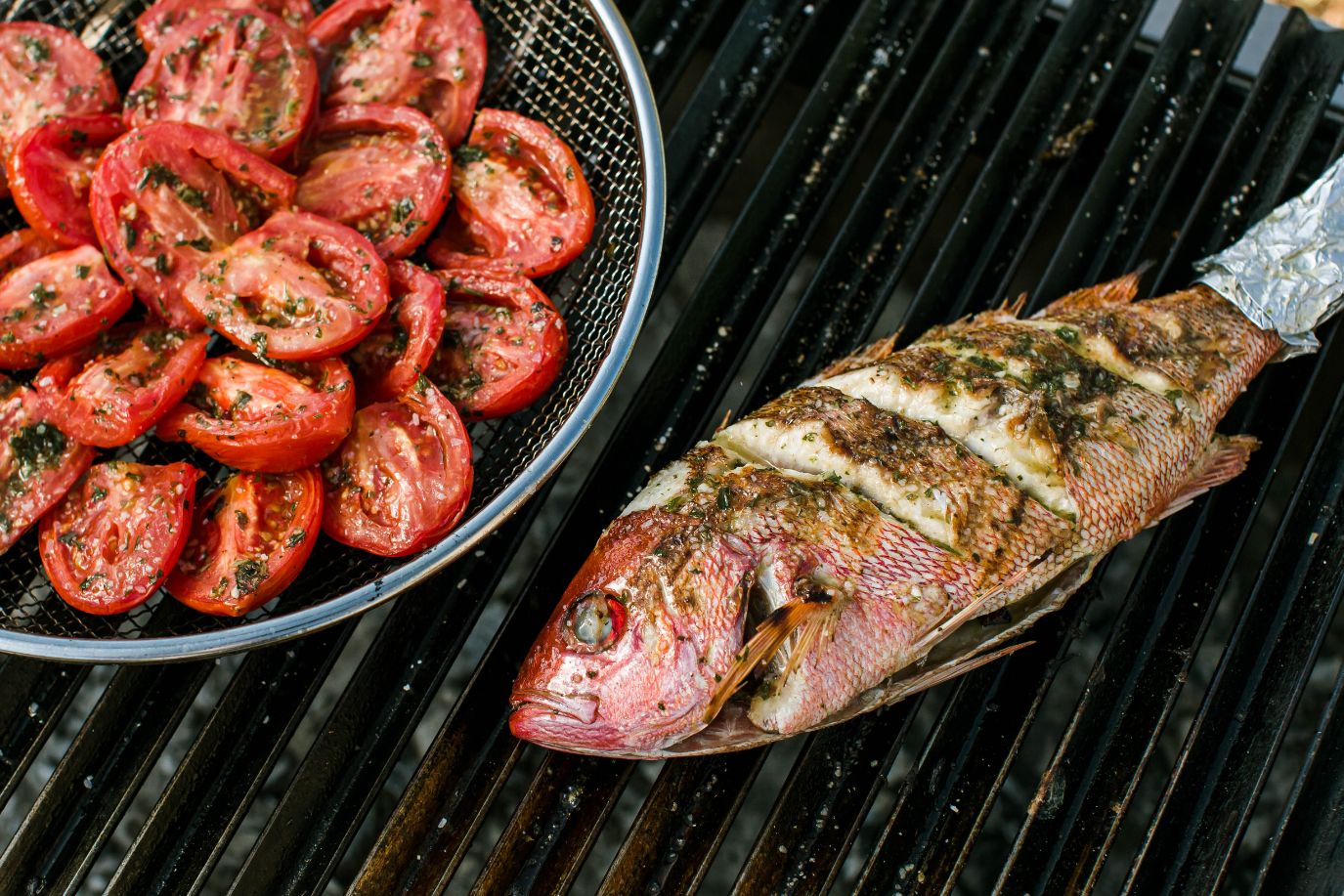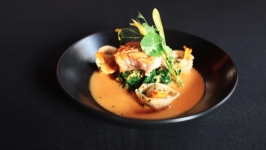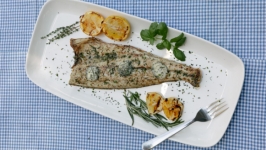How to Grill Whole Fish
A hot grill is a must. Have you ever seen droplets of water float and bounce about in an extremely hot skillet? It's as if they are ice skating in the pan. This is because the high heat of the skillet is above the Leidenfrost point (when a liquid, close to a surface that is significantly hotter than the liquid's boiling point, produces an insulating vapor layer that keeps the liquid from boiling rapidly). The bottom part of the water droplet vaporizes immediately and the resulting gas suspends the droplet in the air preventing it from making contact with the pan. The same goes for a very hot grill and fish. Start off very hot to prevent sticking, then lower the heat to prevent burning.
Choose the right fish. Some fish skin is exceptionally tasty when cooked and some is completely inedible. My absolute favorite is hogfish (which is actually a wrasse, not a snapper). Hogfish has virtually no blood line (the dark line that runs from head to tail on a fish in between the belly loin and back loin). That is preferable in grilling whole fish since it cannot be removed before hand. Other good choices are red snapper, striped bass, vermillion snapper, bronzino and trout.
Fish skin loves to stick to a grill. The main cause of this is moisture on the surface. You can do a few things to prevent this. First pat the skin dry with a paper towel. If you have a torch on hand you can lightly torch the skin to help dry it out. Another method is to place the fish in the oven on high broil for 2 minutes, then place on a paper towel before grilling. Make sure to oil the fish and grill just before cooking. If you oil the grill too soon the oil can break down and create unwanted sticky polymers. Also, avoid marinades that contain sugar.
There is an old saying in the kitchen "God doesn't make square fish" and a whole fish does not cook evenly due to an assortment of variable thicknesses in the fish. Making deep lacerations down to the bone in the thickest part of the fish and very shallow cuts near the tail will help with this. It also allows you to salt inside the cuts for a deeper penetration of flavor. Just like with the cauliflower steak, "Baste, baste, baste."
Always place the fish on the grill tail away from you. When you slide a spatula under the fish to flip it you want to follow the natural grain set by the scales. To check for doneness you can peek inside a laceration in the thickest part of the fish right behind the collar.













